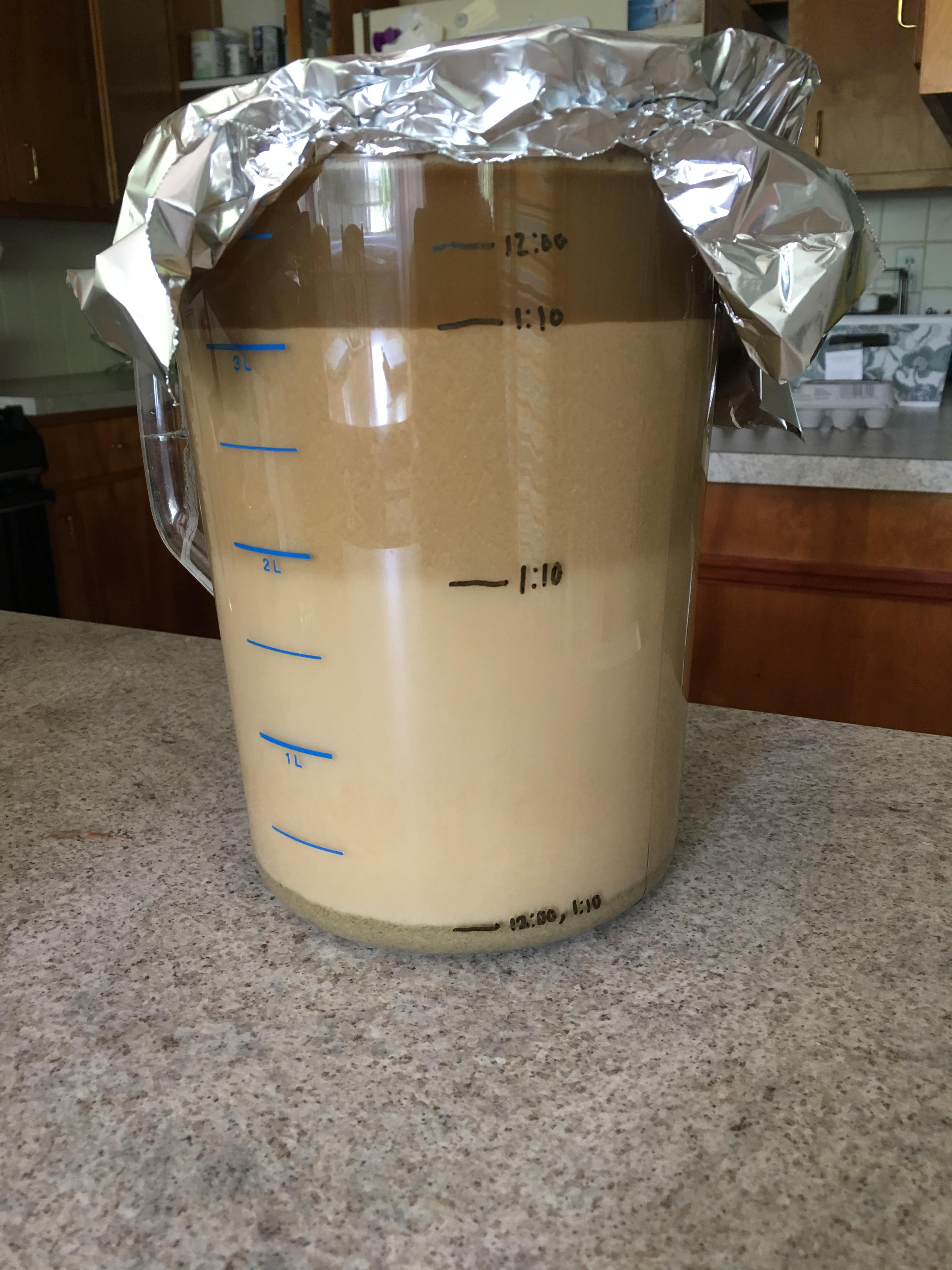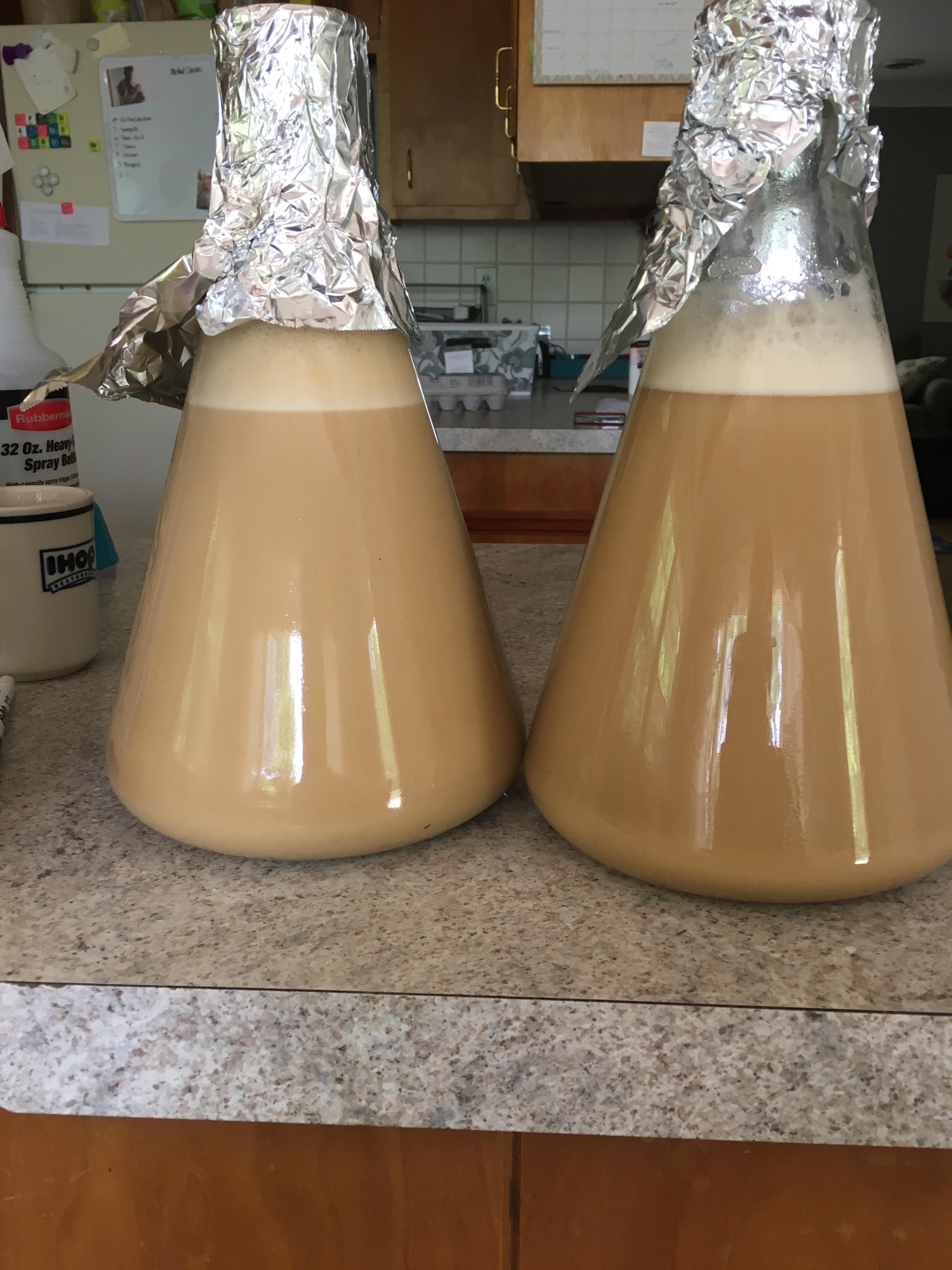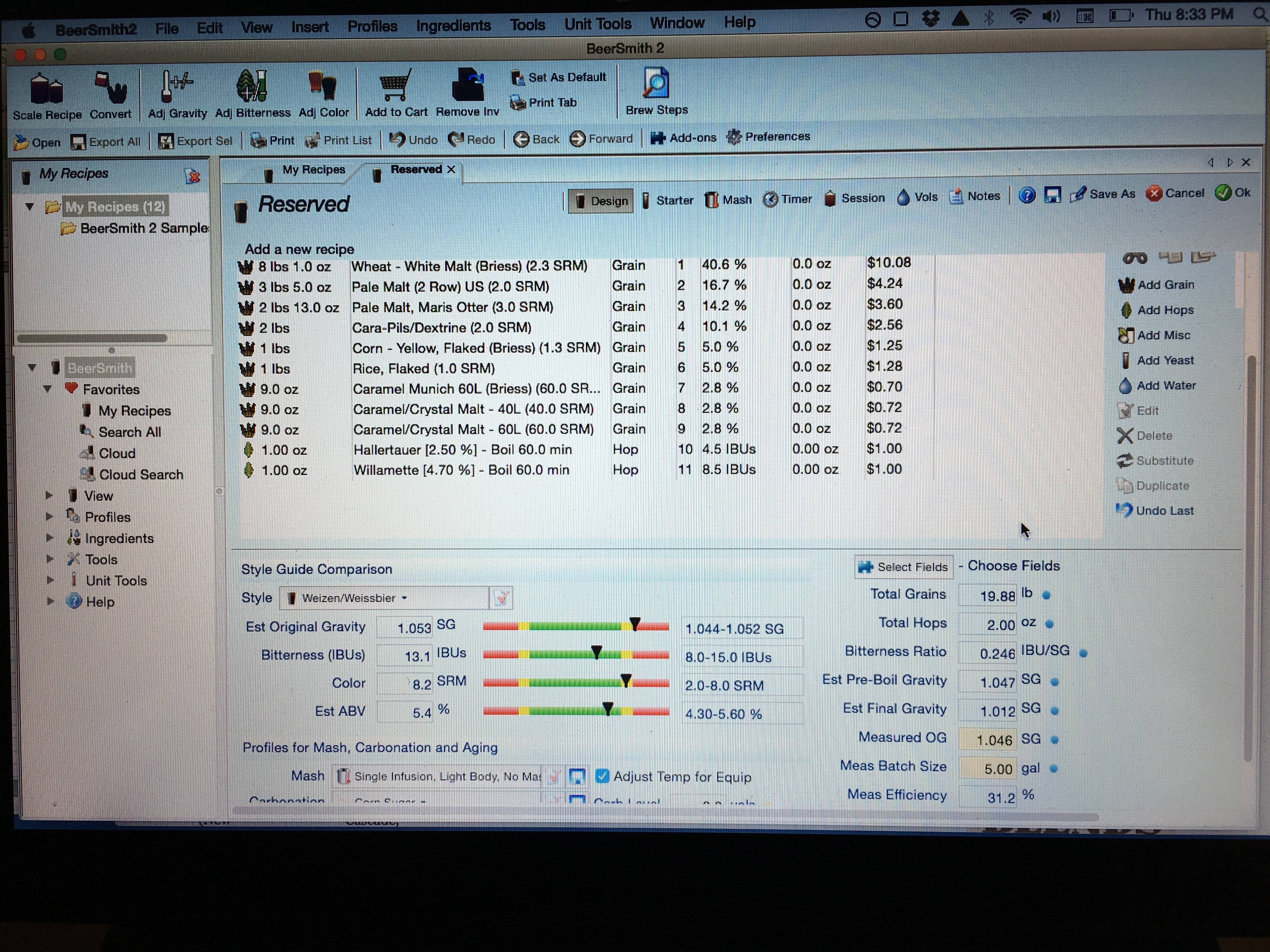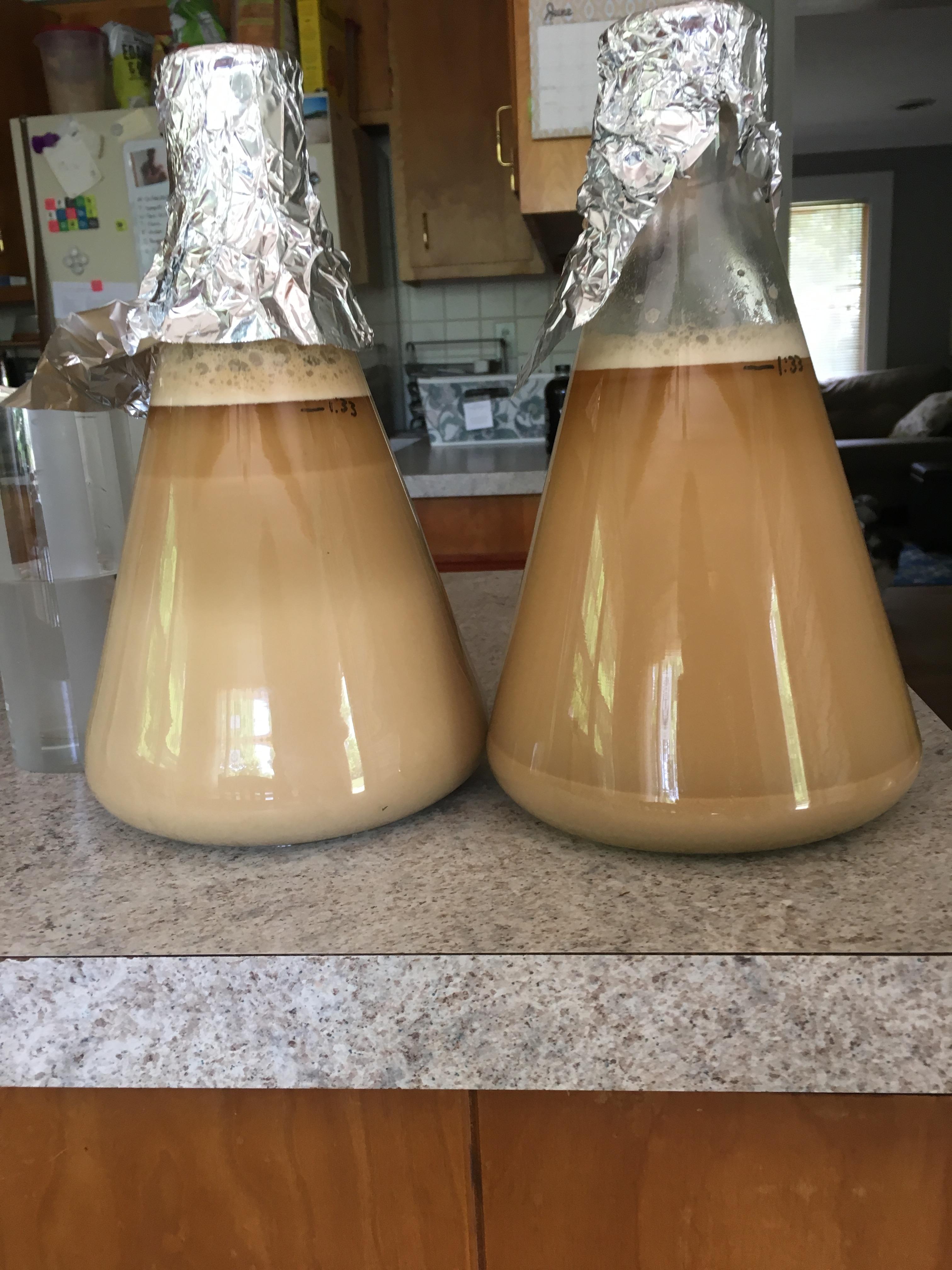aartdouglass
Member
My brother and I just kegged a batch and we wanted to harvest the yeast to ferment 11.5 gallons of an IPA we're brewing tomorrow morning. Here's some potentially relevant information:

The top layer is beer, and there is clearly a layer of sediment at the bottom. However, the two lighter layers are kind of confusing us. We think the big white milky layer is yeast, but aren't sure what the slightly darker layer is above it. We thought maybe that the yeast from the carboys flocculated a little differently due to the clarity ferm added to one (which like I said above, had a clear effect on the yeast dropping), which might be causing these two layers. But we haven't washed much yeast before, so we weren't sure. We feel like both of those layers must be yeast, but we saved both of the middle layers into separate flasks just in case:

Looking for advice. Do you think both layers are fine to combine, settle out and pitch, or just the big milky one? Or maybe the slightly darker one?
Thanks!
- Yeast: WLP001
- We have a hop strainer in the bottom of our boil kettle
- We try not to transfer much break material into the carboys after whirlpooling
- From an 11 gal batch that was separated into two 6.5 gal carboys
- One of the carboys had one vial of clarity ferm added
- The yeast in the carboy with clarity ferm didn't drop as quickly or as completely as the other carboy once fermentation was complete

The top layer is beer, and there is clearly a layer of sediment at the bottom. However, the two lighter layers are kind of confusing us. We think the big white milky layer is yeast, but aren't sure what the slightly darker layer is above it. We thought maybe that the yeast from the carboys flocculated a little differently due to the clarity ferm added to one (which like I said above, had a clear effect on the yeast dropping), which might be causing these two layers. But we haven't washed much yeast before, so we weren't sure. We feel like both of those layers must be yeast, but we saved both of the middle layers into separate flasks just in case:

Looking for advice. Do you think both layers are fine to combine, settle out and pitch, or just the big milky one? Or maybe the slightly darker one?
Thanks!





